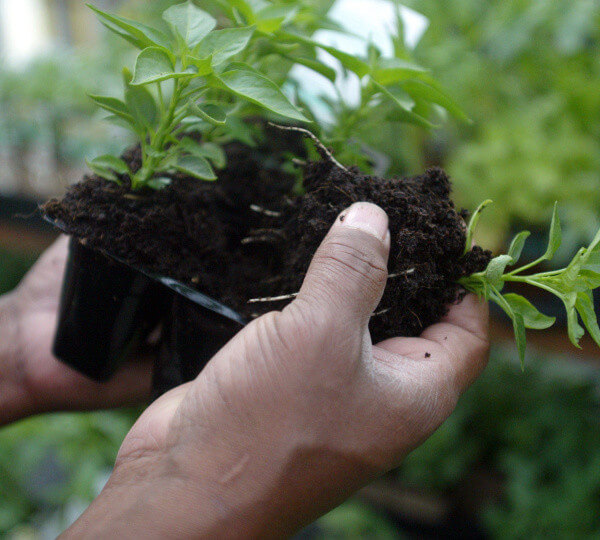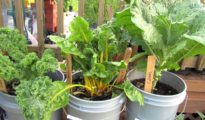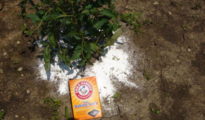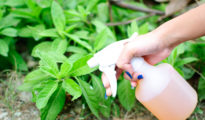As winter retreats and the first hints of spring emerge, gardeners everywhere start to feel that familiar itch to get back into the garden. The barren landscapes left by the cold season begin to show signs of life, from the delicate crocus blooms to the chirping of birds returning from their winter havens. Before diving headlong into the new planting season, one essential task stands out: preparing the soil.
The winter months can take a toll on the health and structure of your garden soil. To ensure your spring and summer plants have the best chance to thrive, a bit of soil prep is crucial. Here's a comprehensive guide to awakening your garden after winter.

1. Assessing the Soil
Before you can improve your soil, you need to know its current condition.
- Moisture Content: Grab a handful of soil and squeeze it. If it forms a wet, soggy ball, it's too wet to work with. If it's crumbly and falls apart, it's too dry. You want soil that's moist but not soggy.
- Soil Test: Consider performing a soil test to determine pH levels and nutrient content. Kits are available at local gardening stores or through cooperative extension services.
2. Clear Debris
Winter can leave a trail of debris in its wake. This might include:
- Fallen leaves and branches
- Dead annual plants
- Weeds
Clearing this debris is crucial, not just for aesthetics but also for preventing disease and pests that might be hiding underneath.
3. Loosen the Soil
After months of being exposed to snow and rain, your soil might be compacted. Compacted soil makes it difficult for plant roots to grow and access nutrients.
- Use a garden fork or broadfork to gently turn and aerate the soil. This process will also help to expose soil-borne pests to birds and other predators.
4. Amend the Soil
Based on your soil test results, you might need to amend the soil to provide optimum nutrition for your plants.
- Compost: This organic material improves soil structure, provides nutrients, and enhances the soil's ability to hold water. It's a gardener's gold.
- Manure: Well-decomposed animal manure can also be a good soil amendment. However, ensure it's well-rotted to prevent burning your plants.
- Lime or Sulfur: If your soil pH is too acidic or alkaline, these can help balance it out. Lime raises soil pH, making it more alkaline, while sulfur lowers it, making it more acidic.
5. Mulching
Mulch can be a gardener's best friend in spring.
- Temperature Regulation: Mulch helps to regulate soil temperature, keeping it from getting too hot or too cold.
- Moisture Retention: It aids in retaining soil moisture, which can be essential during the drier days of spring.
- Weed Control: A layer of mulch can prevent weed seeds from germinating, saving you hours of weeding.
Choose organic mulches like straw, leaves, or bark, which will slowly decompose and add nutrients back into the soil.
6. Plan and Rotate Crops
To reduce the chances of soil-borne diseases and pests, consider rotating crops. This means planting different crops in different spots than the previous year. By doing this, you not only confuse pests but also ensure that the soil nutrients are used more efficiently.
7. Avoid Chemicals
It might be tempting to resort to chemical fertilizers for a quick fix. While they offer immediate nutrients, they can harm the soil's microbiome in the long run. Instead, opt for organic, slow-release fertilizers that nourish the soil over time.
1. Understanding Soil Types
Texture matters. Knowing whether you have sandy, loamy, or clayey soil will influence your preparation techniques.
- Sandy Soil: Drains quickly and warms up faster in spring. It might need organic matter to improve nutrient and moisture retention.
- Loamy Soil: Often deemed the ideal soil type, it retains moisture well and drains excess water effectively. Regular additions of organic matter keep it in top shape.
- Clay Soil: Cold and compact in spring, it needs ample loosening and organic matter addition to enhance its structure.
2. Enriching Soil Biology
While amending soil, remember that you're not just feeding plants; you're nourishing a vast ecosystem of microorganisms.
- Worms: Earthworms aerate the soil and their castings are nutrient-rich. Introduce worms to plots that lack them.
- Microbes: Beneficial bacteria and fungi help roots absorb nutrients. Consider adding compost tea or mycorrhizal fungi supplements.
3. Strategically Tilling
While tilling can be useful for breaking up compacted soil, excessive or repeated tilling can disrupt soil structure and harm beneficial organisms.
- Opt for no-till or minimal-till methods when possible.
- Use tilling as a chance to mix in soil amendments uniformly.
4. Green Manures & Cover Crops
These are plants grown specifically to be turned back into the soil, improving its fertility and structure.
- Plants like clover, vetch, and rye can be grown during the off-season. Come spring, they are tilled into the earth, releasing nutrients as they decompose.
5. Natural Nutrient Boosters
Instead of synthetic fertilizers, consider:
- Bone Meal: High in phosphorus, it promotes root and flower development.
- Blood Meal: A nitrogen booster, it aids in leafy growth.
- Fish Emulsion: Rich in nitrogen and other nutrients, it's a well-rounded organic fertilizer.
6. Combatting Soil-Borne Diseases
- Solarization: This is the process of covering the soil with clear plastic during the hottest weeks, using the sun's heat to kill pathogens.
- Biofumigation: Certain crops, like mustard, release natural chemicals that suppress soil-borne diseases when dug back into the soil.
7. Watering Techniques
Pre-spring watering prepares the land, especially if the winter was dry.
- Deep Watering: Encourages roots to grow deeper into the soil, making plants more resilient during dry spells.
- Morning Watering: This reduces evaporation losses and ensures water is available to plants when they need it most.
8. Plan for Pests
Remember, not all bugs are bad.
- Encourage beneficial insects like ladybugs and praying mantises by planting flowers they're attracted to.
- Understand the pests common in your area and prepare for natural deterrents or barriers.
A garden’s soul is its soil. Spring preparation is less about short-term gains and more about fostering a dynamic, healthy environment in which plants can naturally thrive. As you plunge your hands into the earth this spring, know that with every thoughtful amendment and adjustment, you're setting the stage for a season of abundant growth and harvest.



















